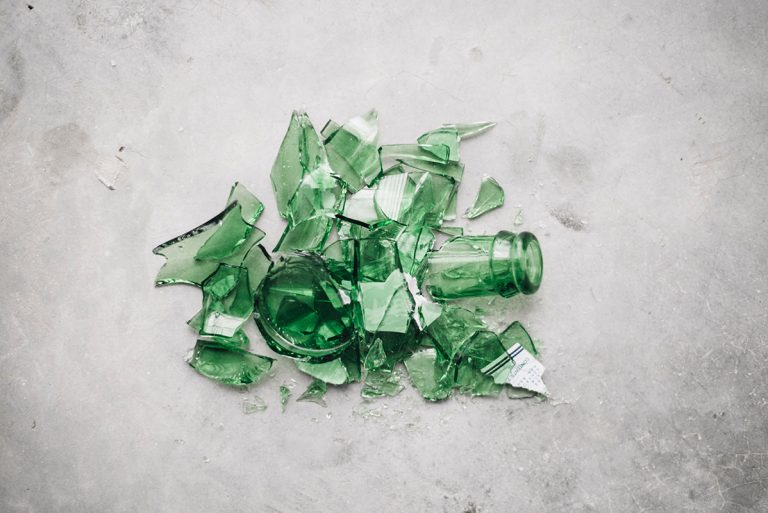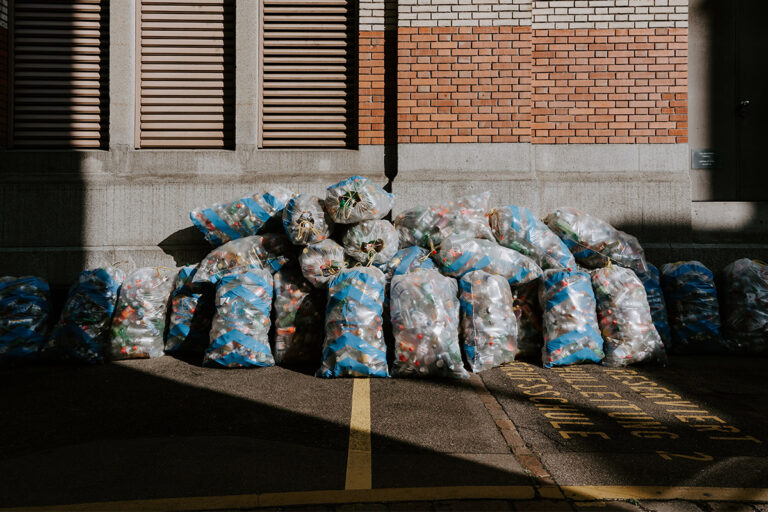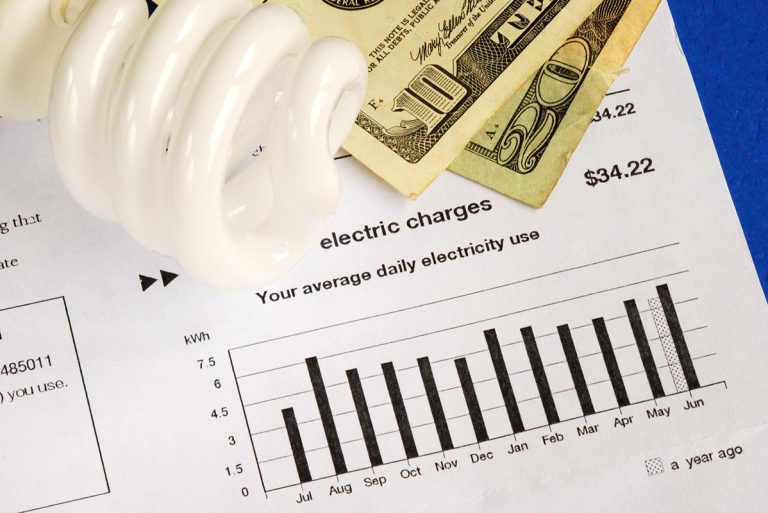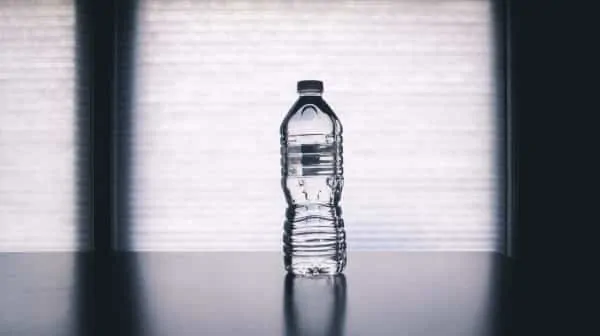You probably already know that glass is one of the easiest household materials to recycle – this is why glass bottles are infinitely more eco-friendly than their plastic alternatives. However, if you’re wondering “is broken glass recyclable?”, the answer is a bit more complicated.
Is broken glass recyclable or is it too dangerous?
Although most glass bottles and containers can be recycled curbside, most municipalities and recycling centers won’t accept broken glass due to safety concerns. Additionally, it’s important to keep in mind that not all types of glass are the same.
Broken glass is generally too hazardous to recycle: the sharp edges of glass shards represent a safety concern for sanitation workers, unless they’re packaged properly. Even still, broken glass can damage the equipment at recycling centers, so they may not accept them at all.

Furthermore, not all glass is the same, and therefore recycling glass is not as simple as it seems.
While container glass is easily recyclable, window glass and mirrors have a certain chemical composition that makes them difficult to recycle at a regular facility. However, broken glass of this kind can still be repurposed, so keep this in mind before tossing it in the trash.
Likewise, wine and drinking glasses contain different chemicals and a distinct melting point compared to container glass. This presents a problem for recycling centers, as mixing the two types of glass can create unstable recycled glass that is prone to fractures.

Lightbulbs may also need to be treated differently, depending on the type of lightbulb. Incandescent and halogen light bulbs are generally accepted for recycling if packaged properly, but fluorescent bulbs are often considered hazardous waste.
For more on recycling LED light bulbs, see our comprehensive guide.
Your best bet is to get in touch with your local municipality and check which types of glass, and in particular what types of lightbulbs, you can recycle curbside. If your area doesn’t accept certain types of glass, you can also look into local recycling centers, such as through Earth 911’s online search tool.
Some states have taken the initiative to encourage people to send more glass bottles to recycling centers. At the moment, there are 10 US states that have active “bottle bills”, or container deposit return laws.
Under these schemes, the consumer pays a small deposit, on top of the cost of the drink, when they buy a beverage in a glass bottle. When you return the bottle to a store or redemption center, you get the deposit back, and so this acts as a deposit to recycle your glass bottles.
Why is it hard to recycle glass in the US?
Over 10 million metric tons of glass are discarded in the US every year, but only one-third of this goes to a recycling center. That isn’t because glass is difficult to recycle – quite the opposite.
Glass’ inherent attributes makes it one of the easiest materials to recycle. Even better, glass can be melted and recycled multiple times without losing its quality.
Even still, the US only recycles 33% of its glass, nearly half the rate in Switzerland or Germany.
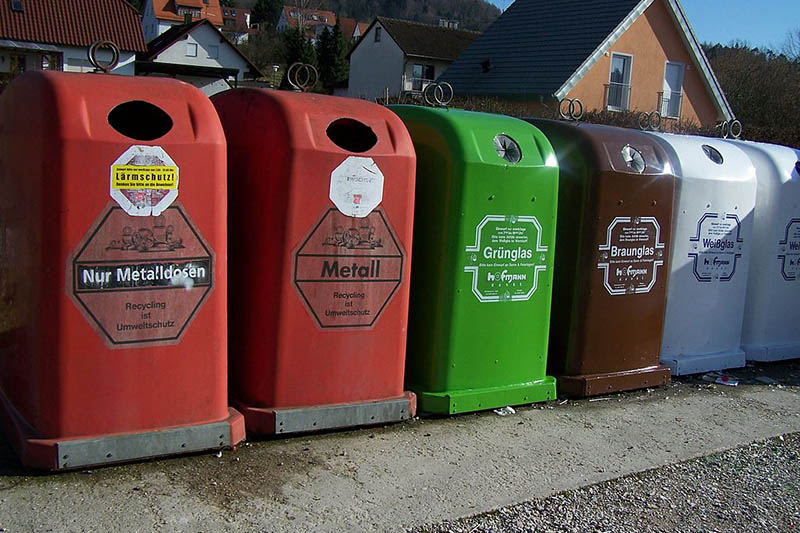
Source: Wikimedia / Florian Hurlbrink
Americans have long been fans of recycling glass. So, why has the glass recycling rate in other countries doubled in the last two decades, while it has barely moved in the USA?
One major reason for this is that in the US, glass manufacturers use cullet — a material produced by crushing different types of bottles and jars and mixing them with sand and other raw materials to manufacture molten glass.
What is cullet?
Cullet is a mixture of sand, and crushed glass from different sources.

Cullet has many environmental benefits:
- it reduces greenhouse gas emissions as its production doesn’t produce carbon dioxide;
- it’s safer to melt;
- it’s energy-efficient, since no carbon dioxide is produced, this avoids bubbles forming in the glass;
- it’s easy to produce, as manufacturers can produce molten glass without having a furnace at a high temperature when cullet in the mix.
Despite all these benefits, recycling centers can only recycle glass made from certain materials, and cullet is not one of those options, because it needs to go through special processing first. US recycling centers are simply unable to process cullet as efficiently as European industries.
So in short, glass made from cullet is not accepted for recycling.
Another common issue is that Americans have a habit of tossing all of their waste in the recycling bin, including many items that don’t belong there, such as plastic bags and light bulbs. Inappropriate waste materials contaminate the recyclable items in the bin, making it harder for the recycling center to sort everything, and can lead to the entire load being thrown out.
Broken glass is a case in point, as, even if it’s accepted by a given recycling facility, it needs to be properly prepared first. We’ll cover how to do this in the next section.
How to safely dispose of broken glass
If you’ve ever broken a drinking glass or a window pane, you’ll know how sharp and dangerous the shards can be. You can imagine what could happen if a sanitation worker was to unknowingly come across these pieces while sorting your waste!
The first step is to check with your local municipality or recycling center to see whether they’ll accept broken glass. Once you’ve found somewhere to take this material, you need to prepare it properly before disposing of it.
1. Check what types of glass the recycler will accept
Because different types of glass are handled differently, the first thing you need to do is check with your local municipality or recycling center to see if they’ll accept the kind of glass you have. Tell them the type of glass you have, whether wine glasses, window panes, light bulbs, or something else, and ask if they’ll take it.
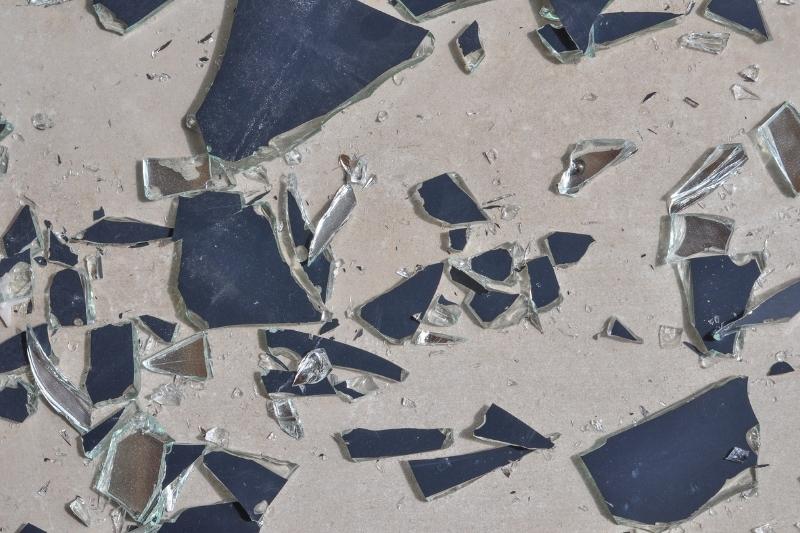
If you can’t find anyone who will accept your broken glass, you will have no choice but to throw it in the trash. However, always ask your local sanitation department before doing this, and be sure to check the rules around potentially-hazardous materials like light bulbs.
Also, be sure to ask them how to prepare the broken glass for recycling. Unless they have any special instructions, follow the steps below.
2. Be mindful of safety
Whether preparing broken glass for recycling or, if this option is not available, to throw in the trash, it’s essential to be careful when handling the pieces, as they could cause a serious injury if not handled properly. Therefore, it’s important to wear the appropriate protective gear.
Put on a pair of puncture-proof gloves and sturdy, closed-toe shoes before cleaning up or handling any broken glass.
3. Put the smaller pieces of glass in a cardboard box
When you’re handling broken glass properly, the next step is to gather up the smaller pieces and put them into a container, such as a cardboard box. This is important to protect sanitation workers, or anyone else handling your waste, from injury.

Never put a large piece of glass into a cardboard box that is too small to accommodate it, or that can pierce the edges of the box and poke through.
If you have large pieces of glass that are too big to fit into the box, wrap the glass in some and break it gently with a hammer: the glass will break into small pieces, and you’ll be able to empty the cloth into a cardboard box.
4. Seal and label the box
After collecting the glass into a cardboard box, seal the box securely with tape. It’s important that the box is sealed tightly so the glass doesn’t find its way out.
Next, label the box: this will make it easier for the waste handlers to deal with the broken glass effectively. Use a red or black marker to write “danger”, “sharps”, or “broken glass” on the outside of the box.
This will let the workers know to handle the box with caution, and also to store it separately so it doesn’t get mixed up with other waste. You can then responsibly dispose of your broken glass.
5. Reuse broken glass
As it can be difficult to recycle broken glass, a better option may be to reuse it. This will give the material new life, and save it from ending up in landfill.

Source: Flickr / John Lambert Pearso
Backsplash
Backsplash walls are not only a practical addition to kitchens and bathrooms, but they also act as the focal point of these small spaces. Instead of tiles, you can use broken glass to create a unique backsplash wall.
Simply grab a glue gun to stick the broken glass pieces to your wall. You can mix different colors of glass to create a functional and decorative backsplash.
Photo frames
Another way to reuse glass shards is as a raw material to decorate photo frames. Using glitter (preferably biodegradable) and a glue gun, you can stick these shards to any photo frame – the glitter is optional, but it will add extra sparkle!
Glass fridge magnets
Fridge magnets are not only decorative, but extremely handy for holding your notes, photos, and grocery list. Stick small magnets on the back of a piece of glass using a glue gun to create funky magnets.
Garden stones
For some unique outdoor décor for your yard, take some broken pieces of glass and a set of garden rocks. Glue the glass pieces to the rocks using a glue gun, and then place them in your yard or gift them as a fun present to keen gardeners.
Wrapping up
Glass containers are easy to recycle, but drinking glasses, window panes, and light bulbs are a bit more tricky. Things get even more complicated when it comes to broken glasses, which can be hazardous.
If you’re wondering if broken glass is recyclable in your area, check with your local sanitation department, or contact a recycling center. Just be sure to ask for their instructions on how to handle this potentially-dangerous material, and prepare it properly for disposal.
To learn about responsibly disposing of difficult materials, take a look at our guides to recycling wood, silicone, and kitchen knives.
